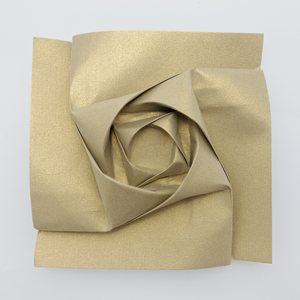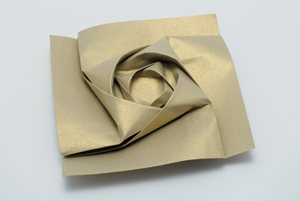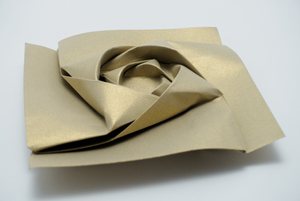Stacked Whirlwind Molecule



This is a single molecule which can be tessellated. It is made from a molecule of Whirlwind Tessellation placed inside a larger one. More than the two levels shown here are possible. Curved folding combined with shiny metallic paper results in a very smooth model which feels almost as if folded from fabric. Seen at a low angle as in the last picture, the rim of the molecule looks like a series of sand dunes.
This molecule is an example of a class of recursive molecules which differ from typical recursive tessellations: you have to build it from the inside out (i.e., start with the smallest copy of the pattern and work outwards towards the larger ones) while in designs such as Fujimoto’s Hydrangea you start from the outer copies and work towards the center, and are able to always add another, deeper level, as far as the paper’s thickness allows. In other words, in Stacked Whirlwind Tessellation, the center of the molecule is “thin” while in Hydrangea it is “thick” and thus allows another iteration to be folded.
Comments